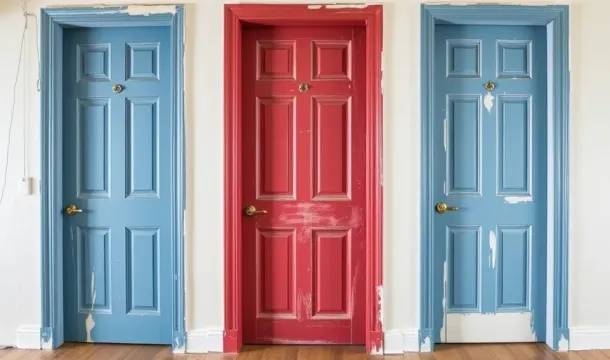Impact of Interior Doors on Home Heating and Cooling Costs
Popular Articles
Choosing the right interior doors directly influences your home’s heating and cooling performance. Doors with high-quality insulation materials reduce thermal exchange between rooms, helping maintain stable indoor temperatures. For example, solid-core doors can decrease heat loss by up to 15% compared to hollow-core alternatives, significantly lowering energy consumption in climates with extreme temperature variations.
Properly sealed interior doors enhance climate control efficiency by minimizing air leakage. Installing weatherstripping around door frames improves the barrier against drafts, which can account for as much as 25% of unwanted heat transfer within a home. This simple adjustment reduces strain on HVAC systems and cuts monthly energy bills.
The choice of door design also affects airflow management throughout the living space. Doors equipped with adjustable vents or louvers allow controlled circulation without compromising insulation levels, optimizing comfort while maintaining energy efficiency. Prioritizing insulated interior doors tailored to your home’s specific climate conditions ensures measurable savings over time.
Door Material Influence on Insulation
Choosing interior doors made from solid wood or composite materials with integrated insulation significantly improves a home's energy performance. Solid wood doors provide natural thermal resistance, reducing heat transfer between rooms and supporting stable indoor temperatures during heating and cooling seasons. Composite doors often contain foam cores or honeycomb structures designed specifically to enhance insulation efficiency.
In climates with extreme temperature variations, opting for insulated door cores can lower energy consumption by minimizing unwanted air exchange. Materials like medium-density fiberboard (MDF) combined with polyurethane foam cores deliver up to 40% better thermal retention compared to hollow-core alternatives. This directly translates into reduced load on HVAC systems, improving overall home climate control.
Additionally, surface finishes affect insulation properties; laminated or veneered doors create tighter seals around the edges, preventing drafts that compromise heating and cooling efforts. Prioritizing door materials with high R-values ensures measurable energy savings and supports long-term comfort within interior spaces.
Sealing Gaps to Prevent Air Leaks
Seal all gaps around interior doors to significantly reduce unwanted air exchange between rooms. Even small cracks around door frames allow heated or cooled air to escape, increasing your home’s energy consumption. Use high-quality weatherstripping made from materials like silicone or rubber, which maintain flexibility and provide durable insulation against drafts in both heating and cooling seasons.
Focus on the door bottom gap by installing adjustable door sweeps or threshold seals. These components block airflow while allowing smooth door operation, preventing temperature imbalances caused by air leaks. Proper sealing directly improves climate control efficiency by minimizing heat loss in winter and reducing cool air leakage during summer.
Regular inspection and replacement of worn seals ensure sustained energy savings. In climates with extreme temperatures, combining tight sealing with insulated doors enhances overall insulation performance, further lowering heating and cooling costs. Maintaining airtight interior doors strengthens your home’s thermal envelope and maximizes HVAC system effectiveness.
Role of Door Placement in Airflow
Positioning interior doors strategically can optimize airflow, directly influencing heating and cooling performance. Doors placed near HVAC vents or return air pathways enhance circulation, supporting consistent temperature distribution and reducing energy consumption.
For homes in colder climates, locating doors to limit cold drafts from unheated rooms improves insulation efficiency by minimizing heat loss. Conversely, in warmer climates, door placement that promotes cross-ventilation aids natural cooling, decreasing reliance on air conditioning systems.
Doors that remain closed during extreme temperature periods prevent mixing of air masses with differing temperatures, preserving insulation performance. Using door placement combined with timed opening schedules can balance fresh air needs without compromising heating or cooling efficiency.
Comparing Solid vs Hollow Doors
Solid interior doors provide superior insulation and energy efficiency compared to hollow core doors. With a dense core made from wood or composite materials, solid doors reduce heat transfer, enhancing the home’s ability to maintain consistent temperatures in both heating and cooling seasons. This improved performance directly impacts energy consumption by minimizing the workload on HVAC systems.
Hollow core doors typically feature a lightweight frame filled with cardboard or honeycomb structures, resulting in lower insulation values. While they are more affordable and easier to install, their reduced thermal resistance can lead to increased energy loss, especially in climates with extreme temperature variations.
For homes located in regions with significant heating or cooling demands, investing in solid doors enhances overall climate control efficiency. Additionally, solid doors offer better soundproofing and durability, contributing to long-term energy savings and comfort.
When selecting interior doors for energy-conscious upgrades, prioritize solid options in frequently used rooms or spaces requiring better temperature regulation. Hollow core doors may still be suitable for closets or low-traffic areas where insulation is less critical.
Upgrading Doors for Energy Savings
Replacing outdated interior doors with models designed for enhanced insulation significantly improves heating and cooling performance. Prioritize doors featuring integrated thermal cores or added insulation layers to reduce energy loss between rooms.
- Choose insulated door panels: Doors with polyurethane or polystyrene cores can cut heat transfer by up to 30%, maintaining consistent climate control across interior spaces.
- Install airtight weatherstripping: High-quality seals around the door perimeter prevent drafts, boosting overall energy efficiency by minimizing air exchange between conditioned and unconditioned areas.
- Select doors with tight-fitting frames: Precision-engineered frames limit gaps that compromise insulation, directly affecting heating and cooling costs.
Energy-efficient interior doors contribute to balanced airflow management, helping maintain set temperatures and reducing strain on HVAC systems. In climates with large temperature fluctuations, upgrading to insulated doors lowers energy consumption by improving thermal resistance within the home’s interior zones.
Popular Articles

Choosing the Perfect Interior Doors for Your Canadian Home

A Complete Guide to Choosing Interior Doors for Canadian Homes
